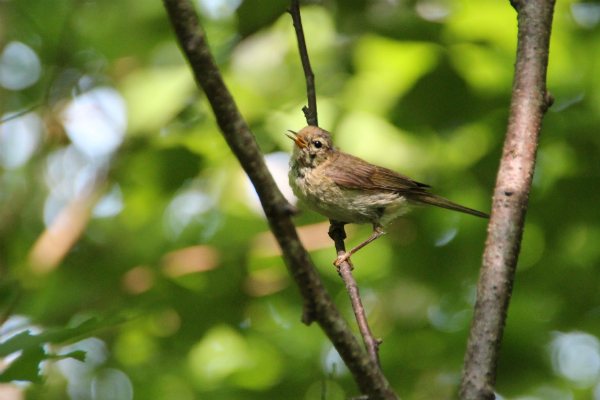Nature Day: LVM Reports on the Environmental Situation in LVM Forests
On 7 April, already for the fifteenth time, JSC "Latvia's State Forests" (LVM) held the "Nature Day" event, where LVM representatives informed the participants on the last year's results of the forest management, environmental monitoring and development project "Introduction of Landscape Ecological Planning Principles in Forest Management Planning".
Such monitoring is carried out every year, and it assesses the impact of forest management on specially protected and rare species of birds, plants, invertebrates, protected habitats. According to the data obtained, it is evaluated whether it is necessary to take additional measures to ensure conservation of forest values.
Senior Environmental Expert Ieva Rove informed the participants that different biotopes of European importance have been identified in the forest areas of about 60 thousand hectares managed by LVM. Every year, this area increases on average by about 10 thousand hectares. The majority of the biotopes are mapped and protected on a voluntary basis.
"It is wonderful that as a result of monitoring of specially protected bird species, a golden eagle nest was found in Northern Kurzeme, suggesting the formation of a new population in this region," says Uģis Bergmanis, LVM Senior Environmental Expert. Environmental Expert Aigars Kalvāns, who coordinates monitoring of osprey nesting success, told that last year 135 nests inhabited by ospreys were recorded, which is the greatest number of nests ever registered in the history.
At the end of Nature Day, the audience got acquainted with the results of the project "Introduction of Landscape Ecological Planning Principles in Forest Management Planning". The project aims at ensuring compliance of LVM forest management practices with the ecological functions: to maintain diversity of species and ecosystems, to ensure a favourable conservation status of species and biotopes of EU significance.
Landscape ecological planning is a tool that integrates the use of natural resources with biological sustainability, taking into account natural processes and changes at different scales of time and space. By 2018, it is planned to improve the methodology and to prepare guidelines for the integration of the landscape ecological planning principles in the LVM forest management planning process.



